Papers by Francesca Baglietto

The practical aspect of this research has been the curation of a series of hybrid exhibitionary s... more The practical aspect of this research has been the curation of a series of hybrid exhibitionary spaces. These exhibitionary forms have resulted from creating a series of interfaces under the umbrella of 'that’s contemporary',a non-profit organization that I co-founded and have run since 2011. In this thesis, the practice of curating is taken to be the operation of 'inscribing' a program of actions (i.e.a script) into the design of interfaces; 'prescribing' these actions to the users of these interfaces; and 'describing' how users actually use the interface. My research argues that interfaces, by being used, unfold hybrid exhibitionary spaces. They are hybrid because the interfaces through which the exhibition is used and produced fluctuate between digital and physical space, in a hybrid zone. In this sense, physical exhibitions are curated along with the organization of their multiple replications on digital and non-digital interfaces. My concept of h...
Conference Paper delivered for 2015 CAA Annual Conference - New York
This paper attempts to read... more Conference Paper delivered for 2015 CAA Annual Conference - New York
This paper attempts to read the exhibition in the terms of a network production, where the network is not what is represented in the text but what readies the text. Latour says that ‘a good account as one that traces a network. […] A string of actions where each participant is treated as a full-blown mediator’. In line with this, a good account of an exhibition is a narrative or a description of a proposition where all the actors (from the curator to the gallery assistant, from the visitor to someone that just heard about the exhibition and so on, but also non-humans actors such as artworks, papers, technical instruments etc.) become an active contributor to the meaning making of the exhibition.

Conference Paper delivered for ISEA 2014 - Dubai.
This paper presents a curatorial project i... more Conference Paper delivered for ISEA 2014 - Dubai.
This paper presents a curatorial project in the form of a locative media experience. Representing the city as an ever-changing assembly of events and exhibitions displayed on a map, this mobile app unfolds hybrid curatorial narratives that users can interact with in digital space and enact in physical space. This paper applies Actor Network Theory to trace the formation of a hybrid exhibitionary space through the creation of a curatorial script embodied in That’s App. Instead of trying to define 'what is' a hybrid exhibitionary space I intend to grasp it 'along the way', attempting to temporarily capture its actor-network and detect the mechanisms in which it functions. In doing so, I primarily present the mobile app, named That's App, by following its hybrid curatorial narratives as enacted by two potential users in Milan, who I have named Ann and Andrea.
Thesis Chapters by Francesca Baglietto

The practical aspect of this research has been the curation of a series of hybrid exhibitionary s... more The practical aspect of this research has been the curation of a series of hybrid exhibitionary spaces. These exhibitionary forms have resulted from creating a series of interfaces under the umbrella of that’s contemporary, a non-profit organization that I co-founded and have run since 2011.
In this thesis, the practice of curating is taken to be the operation of inscribing a program of actions (i.e. a script) into the design of interfaces; prescribing these actions to the users of these interfaces; and describing how users actually use the interface. My research argues that interfaces, by being used, unfold hybrid exhibitionary spaces. They are hybrid because the interfaces through which the exhibition is used and produced fluctuate between digital and physical space, in a hybrid zone. In this sense, physical exhibitions are curated along with the organization of their multiple replications on digital and non-digital interfaces.
My concept of hybrid exhibitionary space is shaped by theory (Lefebvre, 1991; Massey, 2005; Kennedy, 2012) that understands space to be produced by social relations meaning that users create the exhibitionary spaces they inhabit. From this point of view, the exhibition does not pre-exist its users, rather it takes place in an unremitting process of use, opening up the possibility for its multiple descriptions to be made. This idea of use as a form of exhibition production is applied to the concept of network curation, which refers to a type of collective curatorial process that is engendered by users, reiterating and re-contextualizing the exhibition along digital networks.
Inspired by Actor Network Theory, the written component of this research has been interlaced together into an exhibitionary description. This method acts to document while, at the same time, it re-performs the ‘curating’ and ‘curatorial’ processes that originally gave form to these exhibitionary interfaces. In this way, the thesis turns into an interface that mediates between its exhibited objects – my practice – and its users – the readers – while simultaneously enacting the research along this process of mediation.
Teaching Documents by Francesca Baglietto
Talks by Francesca Baglietto



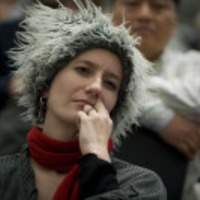


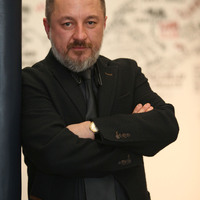
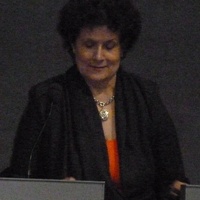
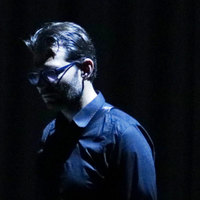
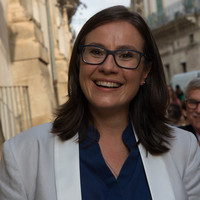

Uploads
Papers by Francesca Baglietto
This paper attempts to read the exhibition in the terms of a network production, where the network is not what is represented in the text but what readies the text. Latour says that ‘a good account as one that traces a network. […] A string of actions where each participant is treated as a full-blown mediator’. In line with this, a good account of an exhibition is a narrative or a description of a proposition where all the actors (from the curator to the gallery assistant, from the visitor to someone that just heard about the exhibition and so on, but also non-humans actors such as artworks, papers, technical instruments etc.) become an active contributor to the meaning making of the exhibition.
This paper presents a curatorial project in the form of a locative media experience. Representing the city as an ever-changing assembly of events and exhibitions displayed on a map, this mobile app unfolds hybrid curatorial narratives that users can interact with in digital space and enact in physical space. This paper applies Actor Network Theory to trace the formation of a hybrid exhibitionary space through the creation of a curatorial script embodied in That’s App. Instead of trying to define 'what is' a hybrid exhibitionary space I intend to grasp it 'along the way', attempting to temporarily capture its actor-network and detect the mechanisms in which it functions. In doing so, I primarily present the mobile app, named That's App, by following its hybrid curatorial narratives as enacted by two potential users in Milan, who I have named Ann and Andrea.
Thesis Chapters by Francesca Baglietto
In this thesis, the practice of curating is taken to be the operation of inscribing a program of actions (i.e. a script) into the design of interfaces; prescribing these actions to the users of these interfaces; and describing how users actually use the interface. My research argues that interfaces, by being used, unfold hybrid exhibitionary spaces. They are hybrid because the interfaces through which the exhibition is used and produced fluctuate between digital and physical space, in a hybrid zone. In this sense, physical exhibitions are curated along with the organization of their multiple replications on digital and non-digital interfaces.
My concept of hybrid exhibitionary space is shaped by theory (Lefebvre, 1991; Massey, 2005; Kennedy, 2012) that understands space to be produced by social relations meaning that users create the exhibitionary spaces they inhabit. From this point of view, the exhibition does not pre-exist its users, rather it takes place in an unremitting process of use, opening up the possibility for its multiple descriptions to be made. This idea of use as a form of exhibition production is applied to the concept of network curation, which refers to a type of collective curatorial process that is engendered by users, reiterating and re-contextualizing the exhibition along digital networks.
Inspired by Actor Network Theory, the written component of this research has been interlaced together into an exhibitionary description. This method acts to document while, at the same time, it re-performs the ‘curating’ and ‘curatorial’ processes that originally gave form to these exhibitionary interfaces. In this way, the thesis turns into an interface that mediates between its exhibited objects – my practice – and its users – the readers – while simultaneously enacting the research along this process of mediation.
Teaching Documents by Francesca Baglietto
Talks by Francesca Baglietto
This paper attempts to read the exhibition in the terms of a network production, where the network is not what is represented in the text but what readies the text. Latour says that ‘a good account as one that traces a network. […] A string of actions where each participant is treated as a full-blown mediator’. In line with this, a good account of an exhibition is a narrative or a description of a proposition where all the actors (from the curator to the gallery assistant, from the visitor to someone that just heard about the exhibition and so on, but also non-humans actors such as artworks, papers, technical instruments etc.) become an active contributor to the meaning making of the exhibition.
This paper presents a curatorial project in the form of a locative media experience. Representing the city as an ever-changing assembly of events and exhibitions displayed on a map, this mobile app unfolds hybrid curatorial narratives that users can interact with in digital space and enact in physical space. This paper applies Actor Network Theory to trace the formation of a hybrid exhibitionary space through the creation of a curatorial script embodied in That’s App. Instead of trying to define 'what is' a hybrid exhibitionary space I intend to grasp it 'along the way', attempting to temporarily capture its actor-network and detect the mechanisms in which it functions. In doing so, I primarily present the mobile app, named That's App, by following its hybrid curatorial narratives as enacted by two potential users in Milan, who I have named Ann and Andrea.
In this thesis, the practice of curating is taken to be the operation of inscribing a program of actions (i.e. a script) into the design of interfaces; prescribing these actions to the users of these interfaces; and describing how users actually use the interface. My research argues that interfaces, by being used, unfold hybrid exhibitionary spaces. They are hybrid because the interfaces through which the exhibition is used and produced fluctuate between digital and physical space, in a hybrid zone. In this sense, physical exhibitions are curated along with the organization of their multiple replications on digital and non-digital interfaces.
My concept of hybrid exhibitionary space is shaped by theory (Lefebvre, 1991; Massey, 2005; Kennedy, 2012) that understands space to be produced by social relations meaning that users create the exhibitionary spaces they inhabit. From this point of view, the exhibition does not pre-exist its users, rather it takes place in an unremitting process of use, opening up the possibility for its multiple descriptions to be made. This idea of use as a form of exhibition production is applied to the concept of network curation, which refers to a type of collective curatorial process that is engendered by users, reiterating and re-contextualizing the exhibition along digital networks.
Inspired by Actor Network Theory, the written component of this research has been interlaced together into an exhibitionary description. This method acts to document while, at the same time, it re-performs the ‘curating’ and ‘curatorial’ processes that originally gave form to these exhibitionary interfaces. In this way, the thesis turns into an interface that mediates between its exhibited objects – my practice – and its users – the readers – while simultaneously enacting the research along this process of mediation.